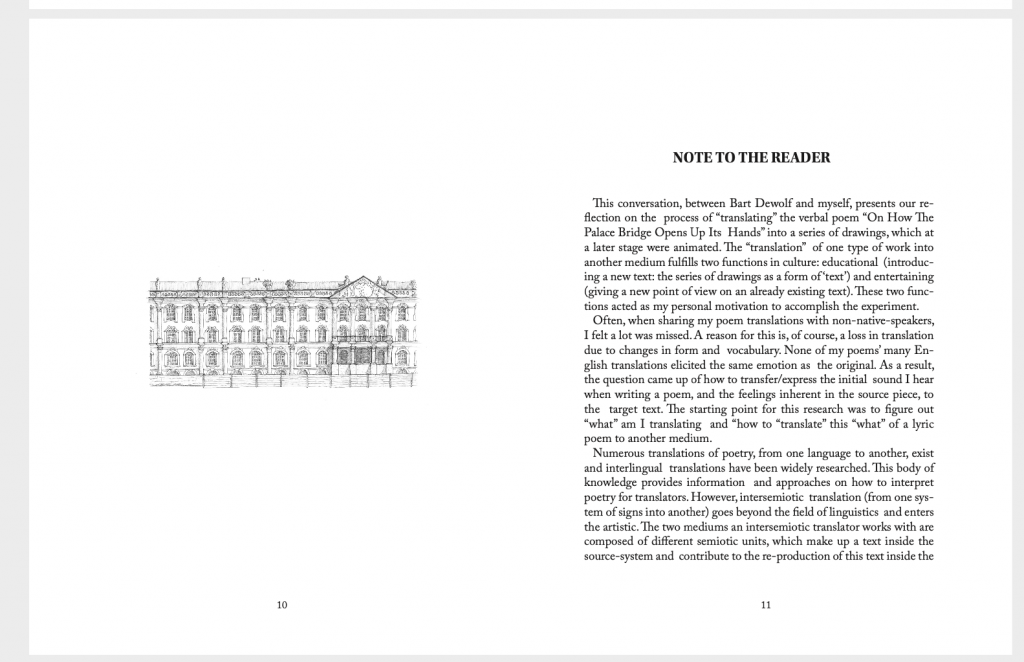A conversation with symphonism through a visualised poem ‘“On How The Palace Bridge Opens up its Hands…”
(in collaboration with Bart Dewolf, Sam Billen and Aram Karakhanyan)

INTRO
This conversation between Marina Kazakova and Bart Dewolf gives invaluable insights into the creative thinking of the two artists and a thorough reflection upon their recent research on how to express lyric poetry in drawing.
The focus of their experiment spans from the investigation of the phenomena of symphonism in various arts to the attempt to use symphonism as a translation strategy, with the ultimate aim of deriving more general vision of the relevance of symphonism in our present-day post-symphonic age.
_______
Sonata-allegro form is a musical form used in thousands of musical works, states M.Kazinnik [Казиник M, Тайны гениев 2019, АСТ, ISBN 978-5-17-109042-5], including:
– all first parts of all Haydn’s symphonies (there are more than a hundred of them);
– all the first parts of all Mozart’s symphonies (there are more than forty of them);
– all the first parts of all symphonies of Beethoven, Schubert, Brahms.
What’s surprising is the fact that the greatest creators of XX century music from Shostakovich and Prokofiev to Hindemith, Stravinsky and Schnittke, despite all their innovations in their musical language, retained, nevertheless, a sonata form, which has not still exhausted itself [Казиник M, Тайны гениев 2019, АСТ, ISBN 978-5-17-109042-5].
The study of the poem “On How The Palace Bridge Opens up its Hands…” allows us to see the presence of a sonata allegro form in the structure of this short piece as well as the principles of counterpoint construction of the poem and the polyphonic thinking.
The work includes the following layers:
1. The text of the poem.
2. The audio visualisation: the voice-over and soundscape.
3. The drawings in ink-and-acrylic: Bart Dewolf (visual artist) put the poem into the drawings in ink and acrylic.
4. The animated film: Sam Billen (animation artist) put the drawings in motion.
Production Process
1. The poem is written.
2. The poem is voiced-over and sounded.
3. The literary source material is converted into an animation film script, from which the storyboard is derived.
4. The storyboard has an appearance somewhat similar to a comic book, and it shows the sequence of shots as consecutive sketches that also indicate camera movements, angles, and framing.
5. The model sheets are prepared for all important characters and props in the film; these are used to help standardise appearance, poses, and gestures. These model sheets show how the characters and object look from a variety of angles with a variety of poses and expressions so that the artist working on the project can deliver consistent work.
6. The final drawings are produced at 16:9 aspect ratio. Once the drawings are ready, the animation work starts.
7. The animation film is made in a 2D format.
Learn more about this part of my research here.
Learn more about symphonism in poetry and arts.
_______


















